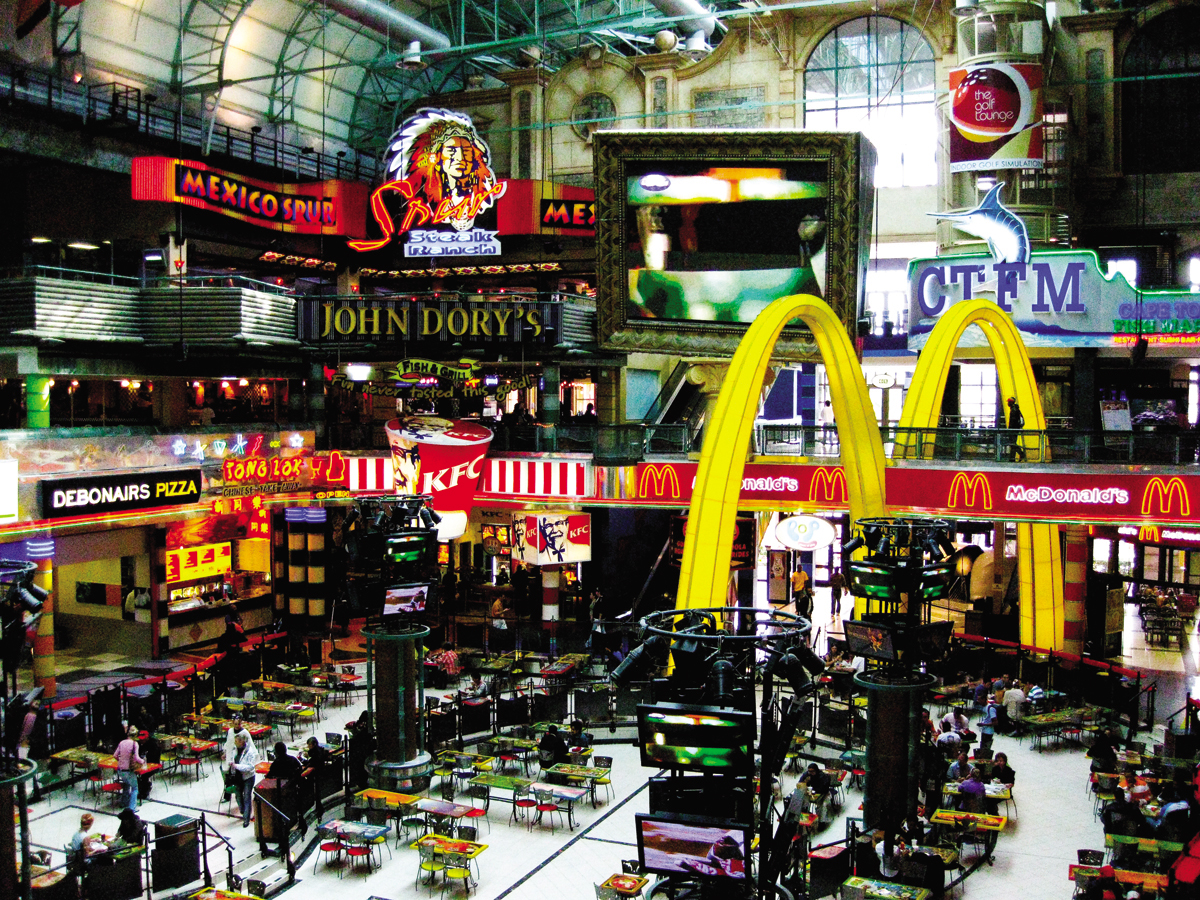Monopolistic Competition
Leo manages the Wonderful Wok stand in the food court of a big shopping mall. He offers the only Chinese food there, but there are more than a dozen alternatives, from Bodacious Burgers to Pizza Paradise. When deciding what to charge for a meal, Leo knows that he must take those alternatives into account: even people who normally prefer stir-

But Leo also knows that he won’t lose all his business even if his lunches cost a bit more than the alternatives. Chinese food isn’t the same thing as burgers or pizza. Some people will really be in the mood for Chinese that day, and they will buy from Leo even if they could have dined more cheaply on burgers. Of course, the reverse is also true: even if Chinese is a bit cheaper, some people will choose burgers instead. In other words, Leo does have some market power: he has some ability to set his own price.
So how would you describe Leo’s situation? He definitely isn’t a price-
580
Yet it would also be wrong to call him an oligopolist. Oligopoly, remember, involves competition among a small number of interdependent firms in an industry protected by some—
Monopolistic competition is a market structure in which there are many competing firms in an industry, each firm sells a differentiated product, and there is free entry into and exit from the industry in the long run.
Economists describe Leo’s situation as one of monopolistic competition. Monopolistic competition is particularly common in service industries such as the restaurant and gas station industries, but it also exists in some manufacturing industries. It involves three conditions:
a large number of competing firms,
differentiated products, and
free entry into and exit from the industry in the long run.
AP® Exam Tip
Don’t confuse monopolistic competition and monopoly or perfect competition. Monopolistic competition has low barriers to entry, unlike a monopoly, and a differentiated product, unlike a perfectly competitive firm.
In a monopolistically competitive industry, each producer has some ability to set the price of her differentiated product. But exactly how high she can set it is limited by the competition she faces from other existing and potential firms that produce close, but not identical, products.
Defining Monopolistic Competition
Large Numbers In a monopolistically competitive industry there are many firms. Such an industry does not look either like a monopoly, where the firm faces no competition, or like an oligopoly, where each firm has only a few rivals. Instead, each seller has many competitors. For example, there are many vendors in a big food court, many gas stations along a major highway, and many hotels at a popular beach resort.
Differentiated Products In a monopolistically competitive industry, each firm has a product that consumers view as somewhat distinct from the products of competing firms. Such product differentiation can come in the form of different styles or types, different locations, or different levels of quality. At the same time, though, consumers see these competing products as close substitutes. If Leo’s food court contained 15 vendors selling exactly the same kind and quality of food, there would be perfect competition: any seller who tried to charge a higher price would have no customers. But suppose that Wonderful Wok is the only Chinese food vendor, Bodacious Burgers is the only hamburger stand, and so on. The result of this differentiation is that each vendor has some ability to set his or her own price: each firm has some—
Free Entry and Exit in the Long Run In monopolistically competitive industries, new firms, with their own distinct products, can enter the industry freely in the long run. For example, other food vendors would open outlets in the food court if they thought it would be profitable to do so. In addition, firms will exit the industry if they find they are not covering their costs in the long run.
Monopolistic competition, then, differs from the three market structures we have examined so far. It’s not the same as perfect competition: firms have some power to set prices. It’s not pure monopoly: firms face some competition. And it’s not the same as oligopoly: there are many firms and free entry, which eliminates the potential for collusion that is so important in oligopoly. As we’ll see in Modules 66 and 67, competition among the sellers of differentiated products is the key to understanding how monopolistic competition works.
Table 57.2 summarizes the characteristics of each market structure.
Now that we have introduced the idea of market structure and presented the four principal models of market structure, we can proceed in the next two sections to use the cost curves we have developed to build each of the four market structure models. These models will allow us to explain and predict firm behavior (e.g., price and quantity determination) and analyze individual markets.
581
Table 57.2Market Structure
| Characteristic | Perfect Competition | Monopolistic Competition | Oligopoly | Monopoly |
| Number of firms | Many | Many | Few | One |
| Product differentiation | No | Yes | Yes or No | No |
| Control over price | None | Within narrow limits | Varies, depending on the degree of mutual interdependence and collusion | Considerable, limited by consumers’ willingness to pay |
| Barriers to entry | None | Few if any | Considerable | Prohibitive |
| Example | Agriculture | Restaurants | Airlines | Utilities |